Key takeaways
- Algorithms are essentially step-by-step instructions, akin to recipes, making them relatable and less intimidating.
- Using everyday examples, visuals, and hands-on practice significantly enhances understanding and engagement in algorithm learning.
- Encouraging a “trial and error” mindset fosters confidence and curiosity, turning challenges into opportunities for discovery.
- Teaching algorithms requires patience and adaptability, focusing on how concepts are presented to facilitate comprehension.
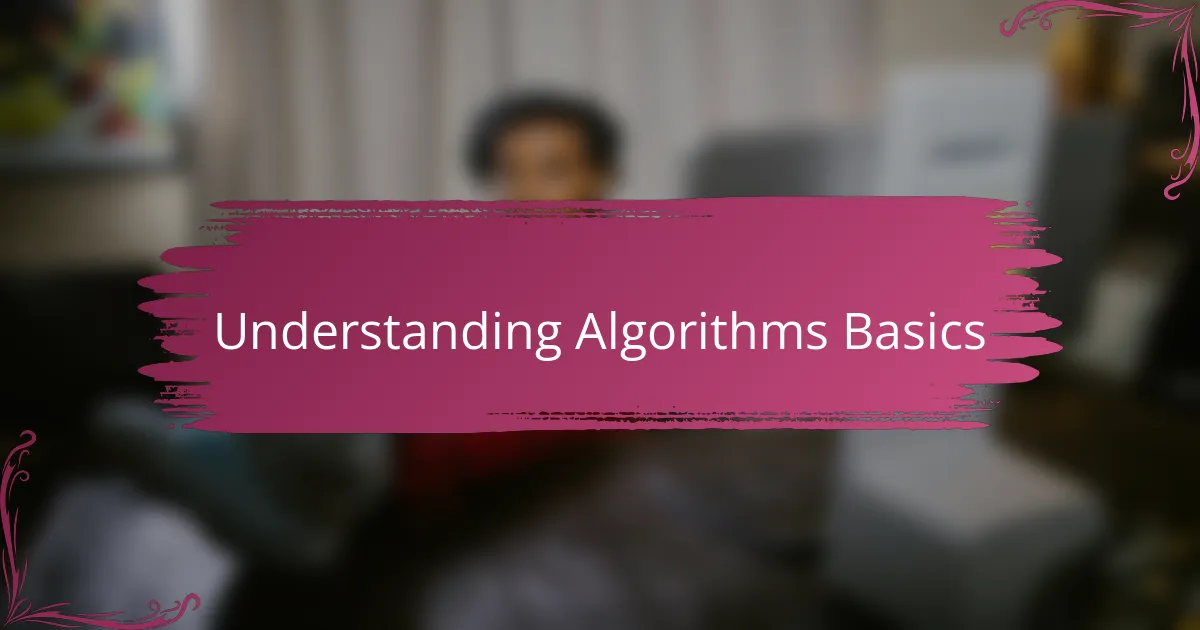
Understanding Algorithms Basics
When I first introduced algorithms to my classmates, I noticed their eyes glazing over as soon as I mentioned the word. It struck me that many saw algorithms as some mysterious, complex magic—something only “tech wizards” could grasp. So, I decided to strip it down to the basics: an algorithm is simply a step-by-step set of instructions to solve a problem, much like a recipe in cooking.
I often asked, “Have you ever followed a list of steps to assemble furniture or bake a cake?” This made it click for them. Algorithms, in my experience, are no different—just a clear path from a starting point to a solution. It felt rewarding to watch moments of realization fade in, as classmates shifted their perspective from confusion to curiosity.
What really helped was comparing algorithms to everyday routines. When I explained that even tying shoelaces or brushing teeth involve sequences of actions, algorithms suddenly felt less intimidating and more relatable. This connection often sparked genuine interest and questions, reminding me that understanding starts when we bring abstract concepts into familiar territory.
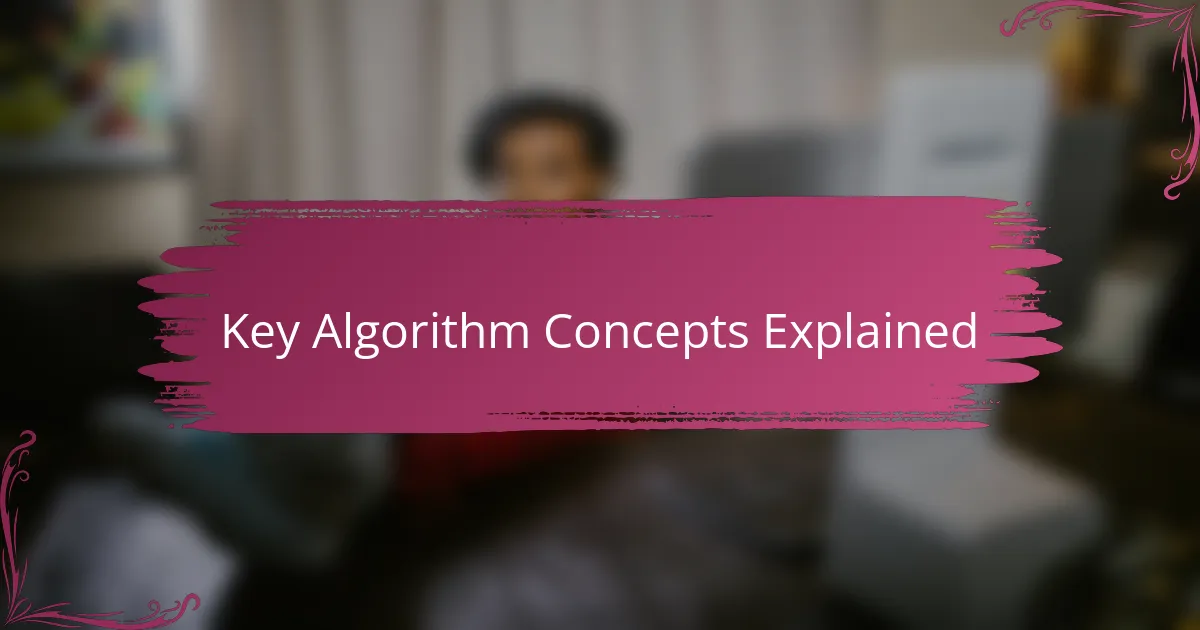
Key Algorithm Concepts Explained
I found that breaking down key algorithm concepts like loops and conditionals into simple, everyday scenarios made a huge difference. For instance, I compared loops to checking each item in a to-do list repeatedly until everything is done—something everyone understood instantly. It was fascinating to see how this analogy made the idea of repetition clear and less abstract.
Another concept that sparked lively discussion was the idea of recursion. At first, it seemed like a scary topic, but I explained it as looking into two mirrors facing each other—each reflection narrowing down until you reach the base case. This image helped my classmates visualize how a problem can be solved by breaking it into smaller versions of itself, which was a big ‘aha’ moment for many.
I also highlighted the importance of efficiency by talking about sorting algorithms. I asked, “Have you ever organized your books or music in different ways—by author, genre, or date?” Explaining that some methods take less time and effort helped them grasp why choosing the right algorithm matters in programming. These real-world comparisons made the abstract concepts tangible and much easier to remember.

Choosing Simple Examples
Choosing simple examples was a game-changer in helping my classmates connect with the material. I remember initially trying to explain algorithms using complex math problems, and seeing their blank stares made me realize I was losing them. So, I switched to examples like sorting a deck of cards or finding the fastest route home—everyday tasks everyone understood immediately.
I asked them, “Have you ever looked for your favorite song in a huge playlist?” This small question sparked instant engagement because the example was relevant and concrete. It made me appreciate how crucial it is to pick examples that fit the audience’s experiences, turning abstract ideas into something they could visualize and relate to.
Sometimes, even the simplest example needs a little tweaking. I noticed that an example too simple could bore or underestimate their ability, so striking that balance was key. What I found most rewarding was watching their confidence grow when they realized algorithms weren’t just theoretical but tools they already used in daily life.
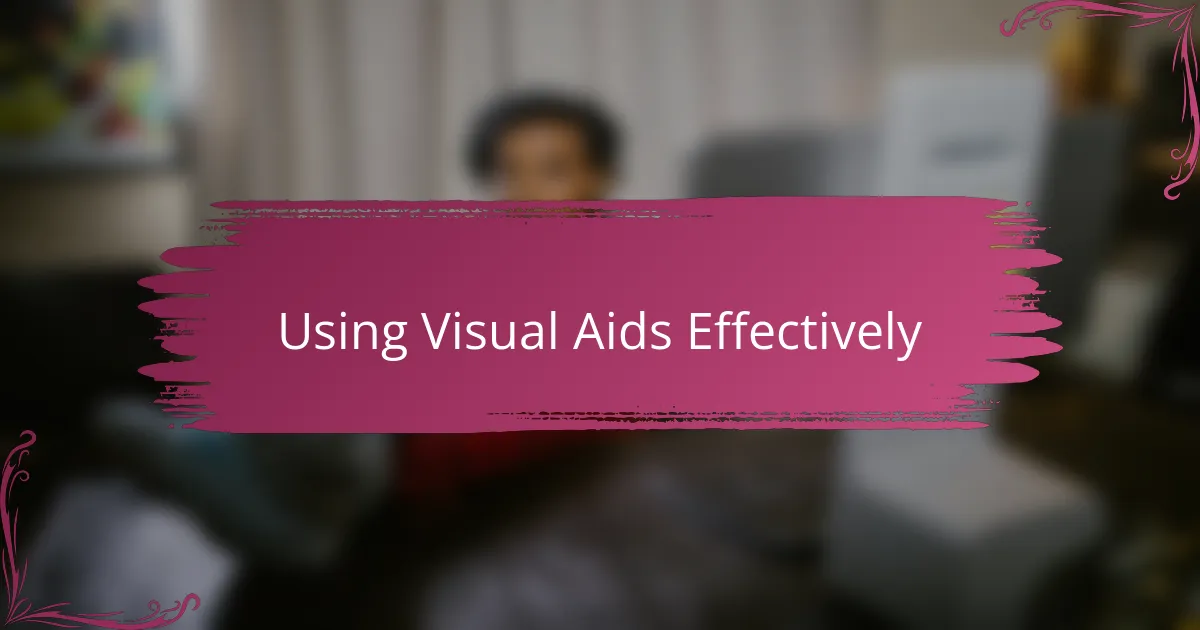
Using Visual Aids Effectively
Visual aids became my secret weapon in breaking down algorithms for my classmates. I started using flowcharts and diagrams to map out the steps visually, and it was like flipping a switch—the abstract suddenly took shape. Have you ever tried to follow a recipe without pictures? That’s how I imagine it felt for them before the visuals came in.
One time, I drew a simple flowchart on the whiteboard to show how a loop works, and I saw heads nodding and eyes lighting up around the room. It made me realize that seeing the process unfold, step by step, helps make the logic less intimidating and easier to follow. I think visuals tap into a different kind of understanding that words alone can’t reach.
But I learned it’s not just about throwing up fancy images or complex charts. The key is keeping visuals clear and straightforward—too much detail can overwhelm. I always asked myself, “Will this picture guide them or confuse them?” Striking that balance was challenging but deeply satisfying when it clicked.
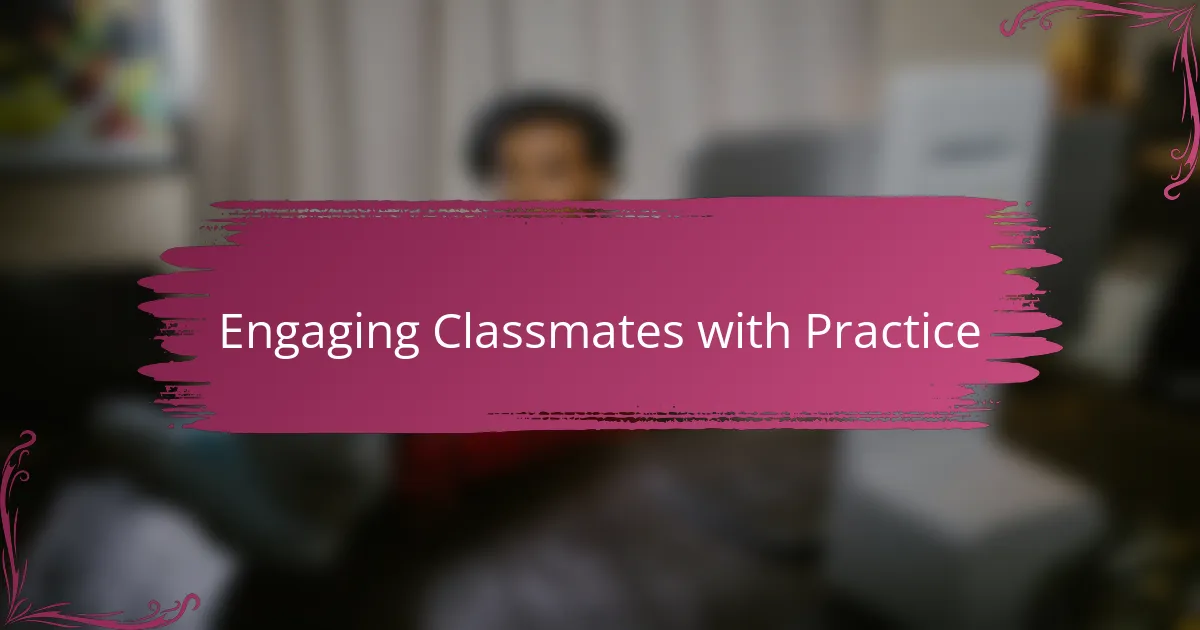
Engaging Classmates with Practice
One of the most effective ways I engaged my classmates was by giving them hands-on practice with algorithms. Instead of just talking, I asked them to solve simple problems step by step, which made the learning process interactive and less intimidating. Have you ever noticed how doing something yourself often makes it stick better than just hearing about it? That’s exactly what happened in my sessions.
I remember one particular time when I divided the class into small groups and gave each a different algorithm challenge—like sorting a list or finding the maximum number in a set. Watching them collaborate, discuss, and even debate was incredible; their excitement was contagious. It made me realize that practice not only reinforces concepts but also builds confidence and a sense of accomplishment.
At times, I could tell some struggled, so I encouraged a “trial and error” mindset. Mistakes weren’t failures but stepping stones to understanding. I often asked, “What do you think happens if we change this step?” This question sparked curiosity and deeper thinking, turning practice from a chore into an adventure in discovery.
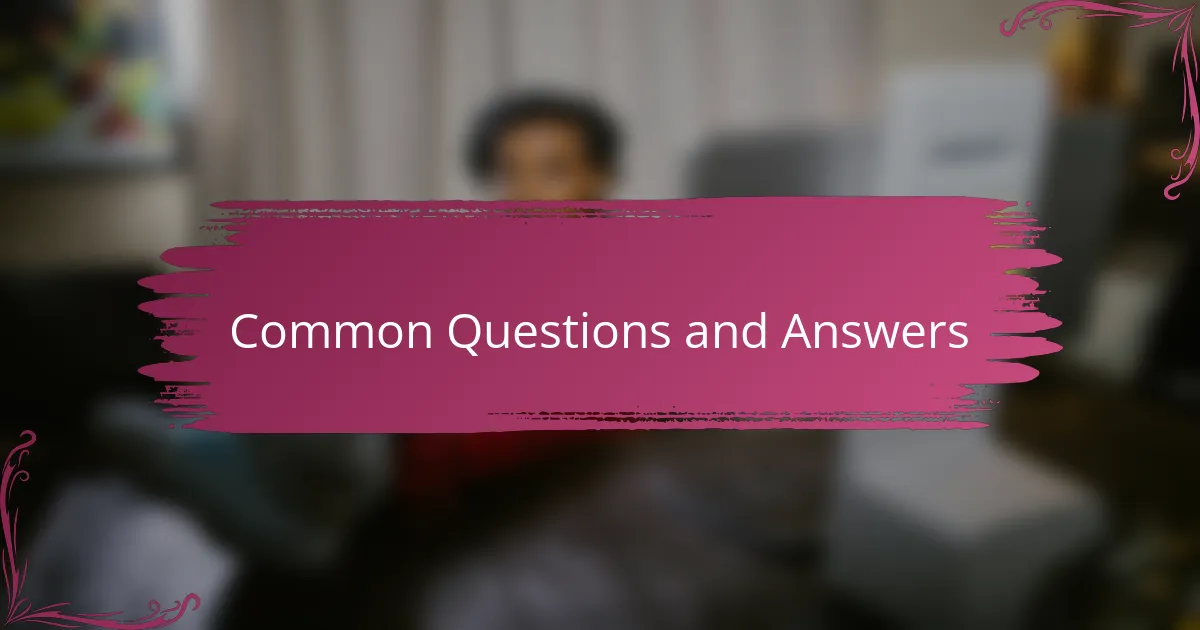
Common Questions and Answers
I often found that the most common question my classmates asked was, “Why do we even need algorithms?” It made me think about how I used to wonder the same thing. I explained that algorithms are everywhere—from how apps recommend videos to how websites organize search results. Once they saw the real-world impact, their curiosity deepened.
Another question was about how to know if an algorithm is the “best” one. I shared my experience of choosing between different sorting methods and how efficiency matters when dealing with large data. I asked, “Have you ever waited forever for your computer to finish a task?” That got them nodding, realizing that smarter algorithms save time.
Some classmates wanted to understand recursion better but felt stuck on the concept of it calling itself. I remembered the moment I grasped it, picturing those mirrors reflecting endlessly. I encouraged them to imagine breaking a big problem into smaller bits, almost like peeling layers off an onion. It seemed to ease their anxiety and led to many “aha!” moments during our discussions.

Personal Teaching Experience Insights
Teaching my classmates about algorithms gave me a firsthand look at how important patience and adapting my explanations were. I discovered that when someone doesn’t immediately get a concept, it’s not about their ability but often about how the information is presented. It made me rethink my own approach to learning and communication in surprising ways.
There were moments when I felt frustrated because I thought a point was clear, only to see puzzled expressions. That pushed me to ask myself, “How can I reframe this so it clicks?” Often, sharing a personal story or a relatable example changed everything. It reminded me that teaching is as much about listening and observing as it is about explaining.
I also found joy in those small victories—when a classmate’s eyes lit up after struggling, or when they started asking questions more deeply. It was a strong reminder that teaching isn’t just about transferring knowledge; it’s about sparking curiosity and confidence. Have you ever felt that thrill when someone finally ‘gets it’? That feeling kept me motivated throughout the process.